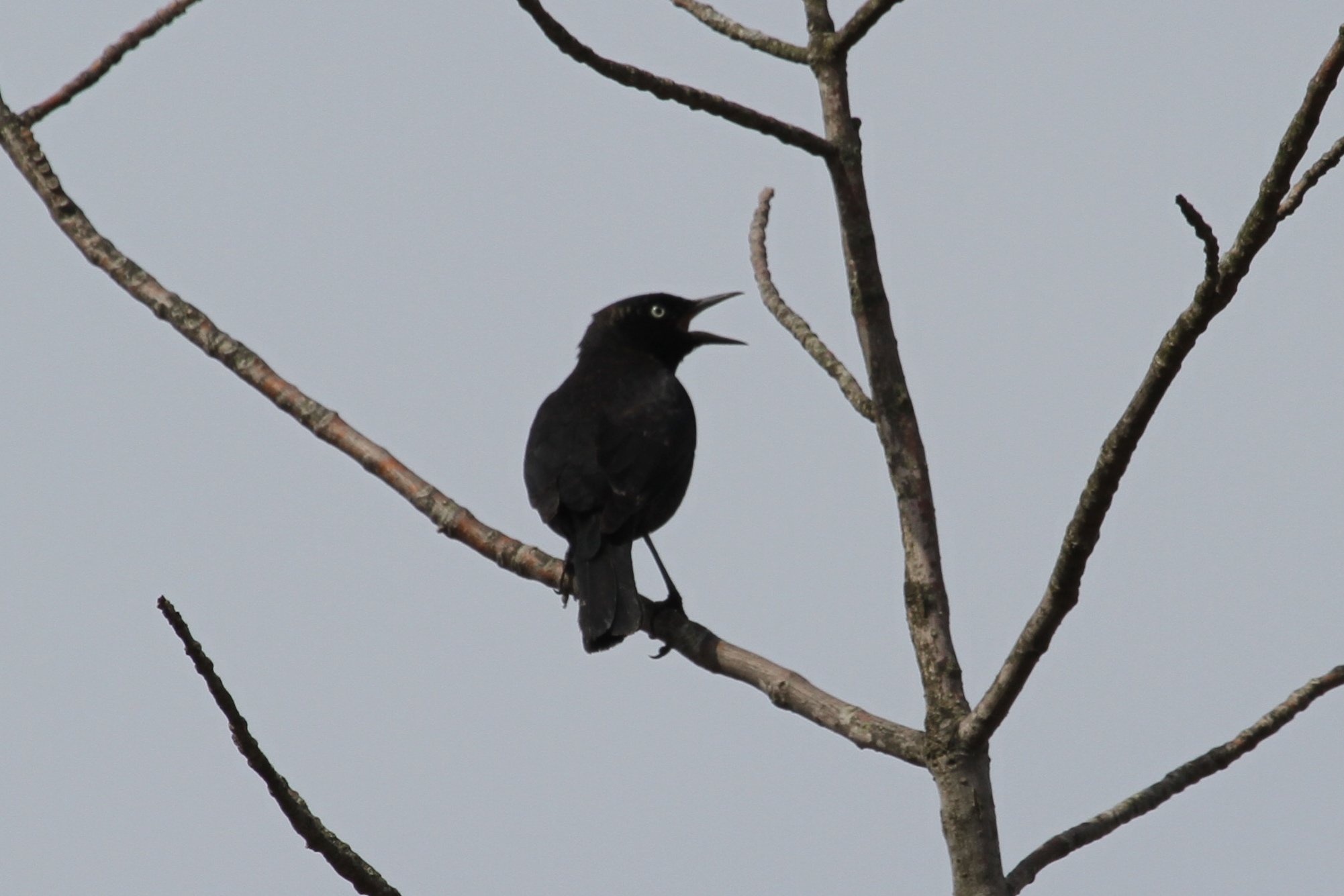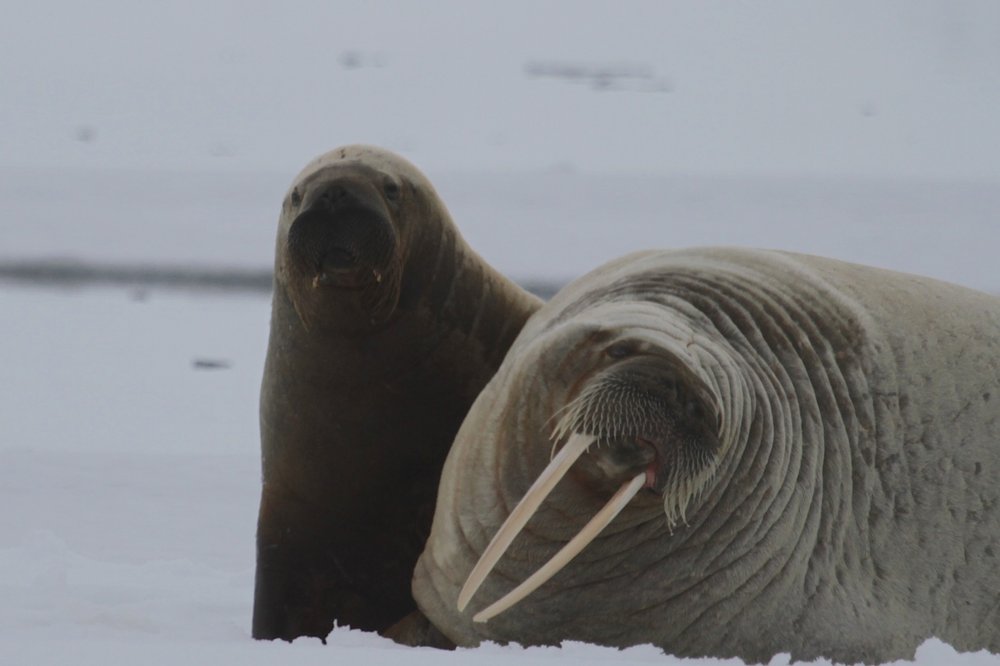Yesterday I celebrated the first day of the Rusty Blackbird Blitz by walking out into the snowy Tivoli Bays to look for a Rusty. I knew full well I would not see one in the still frozen landscape of the bays. Even the Red-winged Blackbirds have not yet returned. Still, I had to go out on snowshoes to roll out the carpet for the Rusty should it decide to stop over later in the spring.
The first time I saw a Rusty Blackbird was three years ago on the muddy causeway of Cruger Island Road. It was the second spring of my bird-obsessed life, when every bird felt a miracle. My friend Peter introduced us: “Look now,” he said, “this is a bird that will be extinct in our lifetime.” What I saw was an ordinary enough bird, black overall, with a bit of brown rust at the nape, and then eyes, white as if they were bottomless. The bird had a grating song, like a squeaky hinge. At that time I doubted Peter’s pronouncement—it felt too full of doom—but research proved he might be right: Rusty populations have plummeted in the past century, with an 88% population reduction. Though scientists estimate that somewhere between 158,00 and 2 million remain, this once abundant bird is in a population free-fall.
Read MoreIn January of 2007, my father and I drove west from Pennsylvania to Arizona together, stopping in Kentucky, Louisiana, Texas. He ate oysters, while I took walks, and together we marveled over our vast country by reading aloud billboards, commenting on the mesquite, the ugliness of strip malls, the trash by the side of the road. The one place he wanted to stop was Aransas National Wildlife Refuge on the upper Texas Coast. Why? To see Whooping Cranes on the bird’s wintering grounds. My father was a novelist, a bookish man, not a naturalist. But the Cranes captured his imagination and he wanted to see them. Aransas, established in 1937 to protect migrating birds and especially the Whooping Crane, is a reliable place to see the birds in winter.
Read MoreThe river was windy last night. Both current and wind were against me as I shoved south in my kayak on the Hudson River. To the side, I saw a lump in the water. I assumed it was a fish, and was hesitant to pull near—marinating fish is not a smell I enjoy. But the shape was not entirely fish-like, so curiosity won out. What I found floating in the water was a gull, its bill hooked through the slit-like nares, by a fishing lure, and the web of its feet hooked by the other end of the lure. It was clear what had happened: the bird had come down to the shiny object expecting a fish meal, was caught through its bill and, in trying to liberate itself with is feet, entangled itself further. The lure hooked the bird to itself, bill and feet joined to shape the bird into a circle. It then plunged into the water and drowned. Not too long ago. The body was soft in my hands, and the feathers intact.
Read More


